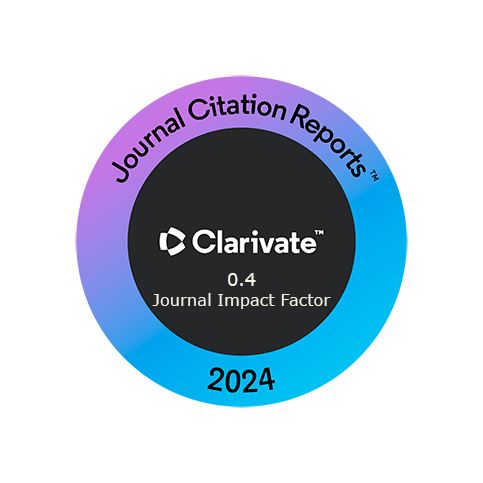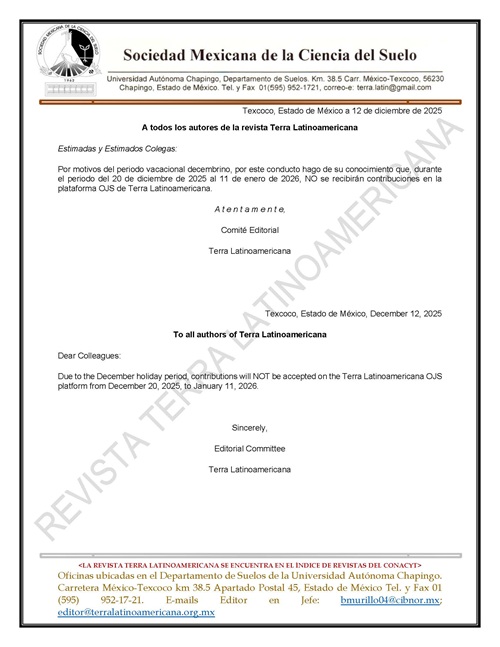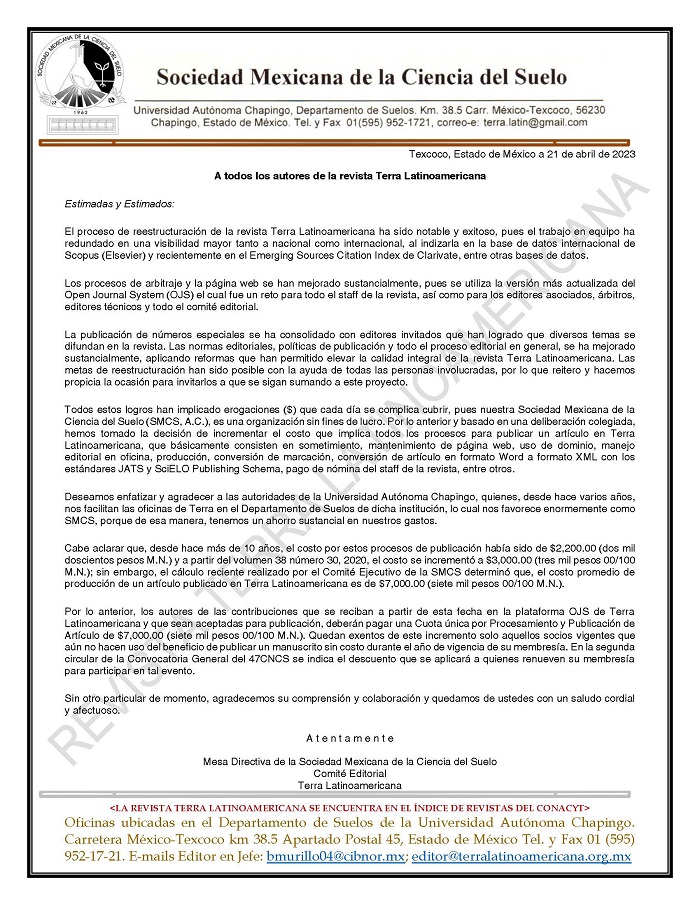Grain yield and population densities of new corn hybrids released by the INIFAP and UNAM for the High Valleys of Mexico†
DOI:
https://doi.org/10.28940/terra.v38i3.557Keywords:
hybrids, male sterility, population densities, Zea mays L.Abstract
In Mexico, corn (Zea mays L.) is one of the most important cereals from the alimentary, industrial, social, political, and cultural points of view. It is grown in different agroecological niches, water regimes, and management systems. The objective of the present research work was to study the optimum plant density per area unit and its effect on grain yield and agronomical characteristics of different corn hybrids. Six corn hybrids (H-51 AE, H 53 AE, H 47 AE, H 49 AE, Tsíri PUMA, and H-48) and three plant densities (50 000, 65 000, and 80 000 plants ha-1) were evaluated. Sowing was done during the spring-summer season, 2015, in field owned by the FESC-UNAM and CEVAMEX-INIFAP. A completely randomized block design was used with four replicates. Significant differences (P ≤ 0.05) were detected for genotypes (G) in the variables of grain yield, plant height, ear height, days to male and female flowering, volumetric weight, grain weight, ear length, and grains per ear. Moreover, the effect of the environment (E) was significant (P ≤ 0.05) for the same variables, with the exception of ear length. No significant differences (P ≥ 0.05) were registered for the densities factor (D). Only the G×E interaction had significant differences (P ≤ 0.05) in the grain yield trait. The better environment was CEVAMEX, with a mean yield of 5497 kg ha-1. The Tsíri PUMA hybrid had the best grain yield with 5856 kg ha-1. Although there were no differences for the studied interactions, the 65 000 plants ha-1 population density was the most appropriate. The densities factor did not affect the performance of the evaluated hybrids. Therefore, we recommend using 65 000 plants ha-1 to avoid investing in large amounts of seeds.
Downloads
Publication Facts
Reviewer profiles N/A
Author statements
- Academic society
- Terra Latinoamericana
- Publisher
- Mexican Society of Soil Science, C.A.

















